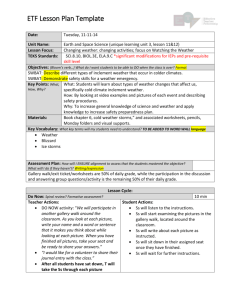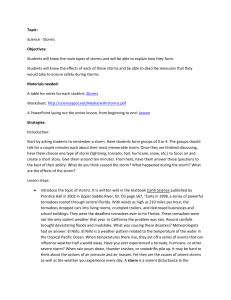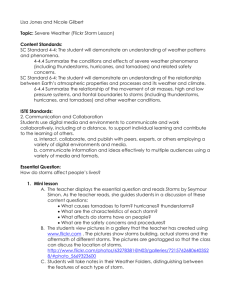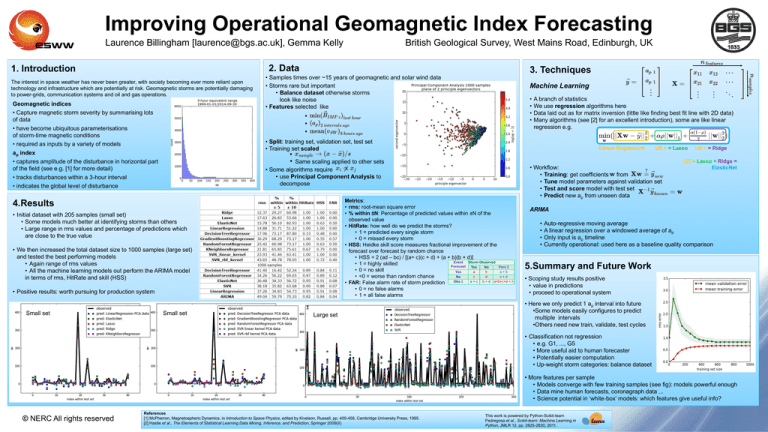
Improving Operational Geomagnetic Index Forecasting
Laurence Billingham [laurence@bgs.ac.uk], Gemma Kelly
2. Data
1. Introduction
The interest in space weather has never been greater, with society becoming ever more reliant upon
technology and infrastructure which are potentially at risk. Geomagnetic storms are potentially damaging
to power-grids, communication systems and oil and gas operations.
Geomagnetic indices
• Capture magnetic storm severity by summarising lots
of data
• have become ubiquitous parameterisations
of storm-time magnetic conditions
• required as inputs by a variety of models
ap index
• captures amplitude of the disturbance in horizontal part
of the field (see e.g. [1] for more detail)
• tracks disturbances within a 3-hour interval
• indicates the global level of disturbance
3. Techniques
• Samples times over ~15 years of geomagnetic and solar wind data
• Storms rare but important
• Balance dataset otherwise storms
look like noise
• Features selected like
Machine Learning
•
•
•
•
A branch of statistics
We use regression algorithms here
Data laid out as for matrix inversion (little like finding best fit line with 2D data)
Many algorithms (see [2] for an excellent introduction), some are like linear
regression e.g.
• Split: training set, validation set, test set
• Training set scaled
Linear Regression
Same scaling applied to other sets
• Some algorithms require
• use Principal Component Analysis to
decompose
Metrics:
• rms: root-mean square error
• % within ±N: Percentage of predicted values within ±N of the
observed value
• HitRate: how well do we predict the storms?
• 1 = predicted every single storm
• 0 = missed every storm
• HSS: Heidke skill score measures fractional improvement of the
forecast over forecast by random chance
• HSS = 2 (ad – bc) / [(a+ c)(c + d) + (a + b)(b + d)]
Event Storm Observed
• 1 = highly skilled
Forecast
Forc Σ
Yes
No
• 0 = no skill
Yes
a
b
a+b
No
c
d
c+d
• <0 = worse than random chance
Obs Σ
a + c b + d a+b+c+d = n
• FAR: False alarm rate of storm prediction
• 0 = no false alarms
• 1 = all false alarms
4.Results
• Initial dataset with 205 samples (small set)
• Some models much better at identifying storms than others
• Large range in rms values and percentage of predictions which
are close to the true value
• We then increased the total dataset size to 1000 samples (large set)
and tested the best performing models
• Again range of rms values
• All the machine learning models out perform the ARIMA model
in terms of rms, HitRate and skill (HSS)
• Positive results: worth pursuing for production system
Small set
British Geological Survey, West Mains Road, Edinburgh, UK
Small set
Large set
LR + = Lasso
• Workflow:
• Training: get coefficients from
• Tune model parameters against validation set
• Test and score model with test set
• Predict new ap from unseen data
LR + = Ridge
LR + Lasso + Ridge =
ElasticNet
ARIMA
•
•
•
•
Auto-regressive moving average
A linear regression over a windowed average of ap
Only input is ap timeline
Currently operational: used here as a baseline quality comparison
5.Summary and Future Work
• Scoping study results positive
• value in predictions
• proceed to operational system
• Here we only predict 1 ap interval into future
•Some models easily configures to predict
multiple intervals
•Others need new train, validate, test cycles
• Classification not regression
• e.g. G1, ..., G5
• More useful aid to human forecaster
• Potentially easier computation
• Up-weight storm categories: balance dataset
• More features per sample
• Models converge with few training samples (see fig): models powerful enough
• Data mine human forecasts, coronagraph data ...
• Science potential in ‘white-box’ models: which features give useful info?
© NERC All rights reserved
References
[1] McPherron, Magnetospheric Dynamics, in Introduction to Space Physics, edited by Kivelson, Russell, pp. 400-458, Cambridge University Press, 1995.
[2] Hastie et al., The Elements of Statistical Learning Data Mining, Inference, and Prediction, Springer 2009(II)
This work is powered by Python-Scikit-learn
Pedregosa et al., Scikit-learn: Machine Learning in
Python, JMLR 12, pp. 2825-2830, 2011.


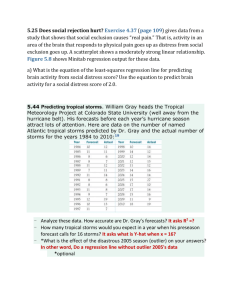


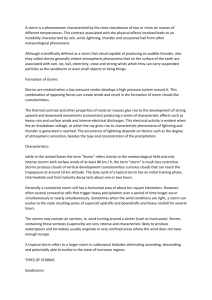
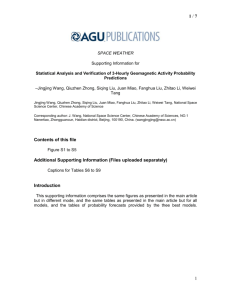
![My Severe Storm Project [WORD 512KB]](http://s3.studylib.net/store/data/006636512_1-73d2d50616f6e18fb871beaf834ce120-300x300.png)
